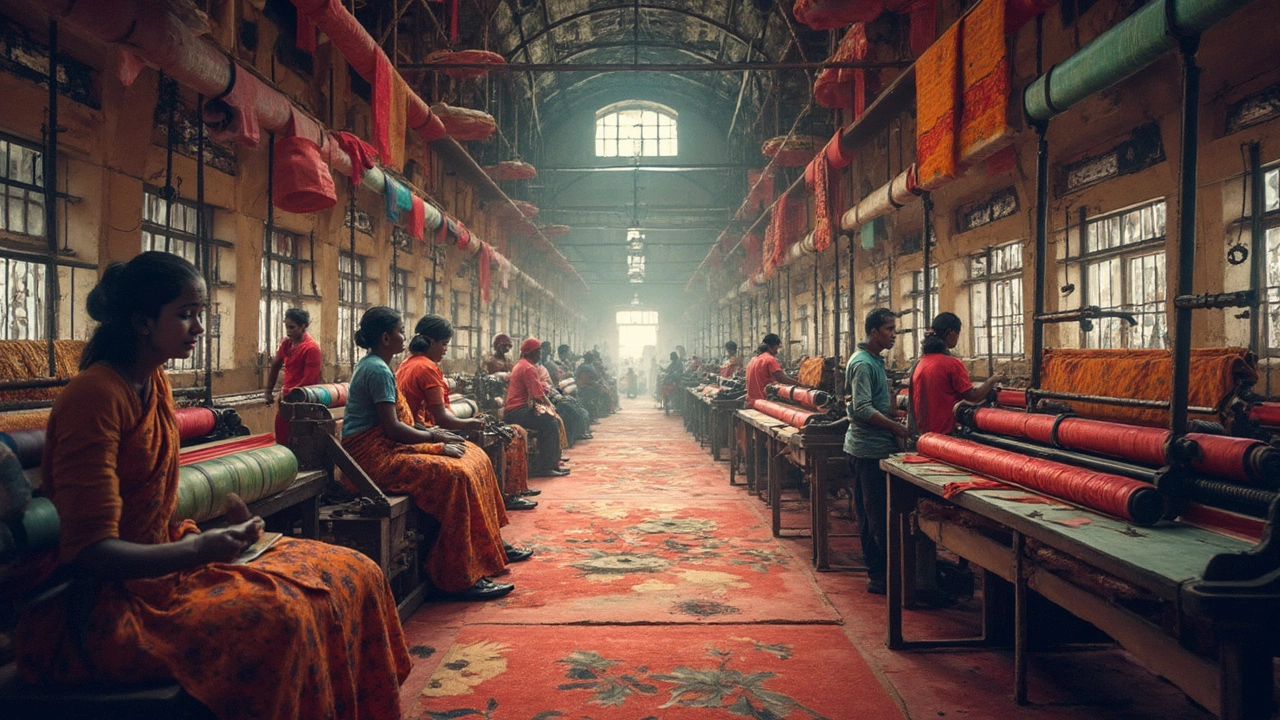India Textile Industry – Trends, Challenges, and Opportunities
India’s textile scene isn’t just big; it’s booming. From cotton farms in Gujarat to high‑tech yarn mills in Tamil Nadu, the country blends tradition with modern tech. If you’re curious about where the next big fabric wave will come from, you’re in the right spot.
Why India Is a Textile Powerhouse
First off, the raw material base is massive. India ranks among the top cotton producers worldwide, and that cheap, high‑quality cotton fuels everything from basic tees to luxury home linen. Add a growing polyester and viscose capacity, and you’ve got a mix that satisfies both local demand and export orders.
Second, labor costs stay competitive. Skilled workers in places like Surat and Bhiwandi can spin, weave, and finish fabrics faster than many rivals. That keeps production costs low, which appeals to global brands hunting cost‑effective sources.
Third, government policies have given the sector a lift. Schemes like the Technology Upgradation Fund and Make in India incentives push manufacturers toward automation, sustainability, and export‑ready quality.
Key Growth Areas to Watch
Technical textiles are the hot new kid on the block. Think fabrics used in automotive, medical, and sports gear. Companies are investing in R&D labs to create moisture‑wicking, antimicrobial, and fire‑retardant materials. This niche promises higher margins than plain cotton.
Sustainability is no longer a buzzword. Consumers demand organic cotton, recycled polyester, and low‑water dyeing processes. Brands that adopt green methods are winning contracts both at home and abroad.
Export markets are expanding beyond traditional US and EU destinations. Southeast Asia and the Middle East are snapping up Indian fabrics for apparel and home décor, driven by competitive pricing and faster shipping.
Digital tools are reshaping the supply chain. From AI‑driven demand forecasting to IoT‑enabled looms, manufacturers can cut waste and react to fashion trends in real time. Small and medium outfits are especially benefitting from affordable cloud platforms.
If you’re thinking of entering the market, start by spotting a niche—maybe a sustainable yarn line or a tech‑textile product for the automotive sector. Then, partner with a local mill that already has the certifications you need. It saves time and avoids the steep learning curve of setting up a new plant.
Overall, India’s textile industry offers a blend of scale, cost advantage, and innovation. Whether you’re a buyer, investor, or a startup founder, the sector’s momentum makes it worth a closer look.
How Much Does It Cost to Start a Textile Factory in India?
Starting a textile factory in India can be a lucrative venture thanks to the abundant raw materials, low labor costs, and a booming market. However, understanding the initial investment, from land acquisition to equipment and staffing, is essential. This article breaks down typical expenses and offers tips for cost-saving opportunities. Dive into practical information, smart budgeting strategies, and insights on making the most of India's evolving textile industry.
View More




